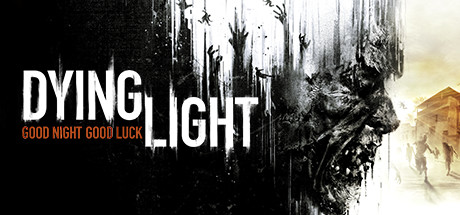Top Wishlists is a ranking of the most anticipated games for PC led by the Steam platform that distributes the products of gamedev for PC. From June 2019, for two years and a half, the first place in it was occupied by Polish games. The TOP 200 included as many as 45 in the half of 2021, and no other country could boast more.
The first Polish leader of Top Wishlists was Cyberpunk 2077. It was released by the most prominent Polish computer games developer, CD Projekt Red. It sold 14 mln copies only in 2020. With the update you can expect that sales will increase again. The developer improved the title on all available platforms. It introduced many improvements to the next-generation version of Xbox and Play Station, as well.
The second leader was Techland’s Dying Light 2 Stay Human, released on February 4 this year. In the first week alone, it sold over 3 mln copies. The first edition from 2016 until today can boast 17 mln copies sold. So its producer hopes that sales should reach even 10 mln by the end of this year.
Of course, the Polish gamedev industry is much more than the two best-known companies. Over 600 new titles are released here every year. From the other point of view, Poland ranks only 19th in terms of the size of its gaming market. Is it any wonder that exports account for as much as 96% of the revenues of the Polish gamedev sector? And that target markets extend from the United States to Japan? 19 titles or series with over 1 mln copies each were sold in recent years. Immediately behind them are dozens of other titles that have won the recognition of hundreds of thousands of customers.
Together or alone
The 6 most prominent companies in the gamedev sector in Poland employ 400 or more people. On the other hand, some individual developers achieved spectacular successes using innovative business models.
The first was Sos Sosowski, the artistic pseudonym of Mikołaj Kamiński, whose McPixel game from 2012 sold at least 500,000. Sos was made famous by giving away gift codes on Pirate Bay. It allowed the game to be downloaded by those who could not afford to buy it. This approach and absurd humor in the narrative and pixel-art graphics in McPixel made Sosowski a superstar in independent games.
Hundreds of thousands of players, mainly from Asia, also bought World of Horror by the creator known as Panstasz. It was because the game distinguishes by its specific artistry and originality. The horror, inspired by the works of Junji Ito / 伊藤 潤 二 (Tomie, Uzumaki) and the Japanese body horror of the 1980s, was further enhanced by what the author called one-beat. The whole game uses graphics only in white and black, i.e., one-bit color depth. A unique atmosphere is because the developer made it in Windows Paint.
Horror games are another specialty of the Polish gamedev sector. Actually, since the premiere of Kholat in 2015, no list of them could exist without Polish titles in this category. Soon, other domestic studios followed this lead. The most successfull is Bloober Team with such items as Layers of Fear, Blair Witch, and The Medium.
Other subsectors
A significant, although more minor media-publicized sector offering services in the game development has also grown in Poland. These are very wide. From external development, comprehensive localization, dubbing, testing, quality assurance. And even support for players or community management. At least 7 companies offer this type of service, employing hundreds of people. Among there are Keywords, Lionbridge, QLOC, Roboto Global, Sperasoft, Testronic, and Platige Image. Except for the latter, they form a specific testing and localization service hub. It is the largest concentration of the sector called QA & Loc in Europe, at least in part dealing with games.
The youngest sub-sector of the Polish gaming industry are emerging global publishers. They are fostered by the progress of the worldwide distribution of digital games on several leading platforms. In 2016, there were only 13 of them in Poland. In 2020 already 44. Their portfolio includes many games outside Poland – from Chile to Japan. It is proof of the maturing of the still young Polish industry.
Growth prospects
The importance of the Polish gamedev sector is appreciated by 56 Polish universities, both public and private, which offer a total of 72 fields of study that are more or less related to game development. With only a few exceptions, they have emerged in the last ten years due to bottom-up processes. Secondly, research shows that women constitute as much as 25% of employees in the gaming industry in Poland, and this is a level that only the UK can beat among the world’s largest industries. Finally, one can estimate that up to 10% of employees creating games in Poland are foreigners, which means that our industry has built enough attraction power to attract people from the outside.
The novelty of the last two years is that the most extensive Polish studies have begun to buy smaller ones from outside Poland, creating their local offices there, and the markets of interest are the United States, Canada, and Western Europe. By producing its titles, Poland commissions work to others, dictates trends that others must follow, and even pushes the boundaries of what we can achieve. And that bodes well for the future.
[Staff comment: Although in 2020 the Polish gamedev market was worth only $1.2 bln, and the global $159 bln – https://www.paih.gov.pl/20201209/polish_gamedev]
Jakub Marszałkowski
The author is one of the organizers of the Gaming Industry Conference, located in Poznań since 2015. Read more about its last edition here.
Below are the logos of Polish-produced games with over 1 mln copies sold:



